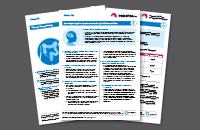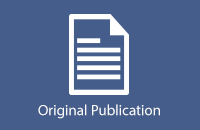 Full Guidelines
Full Guidelines
Click here to view article

 Tools
Tools


 Additional Documents
Additional Documents
Click here to see additional documents

Draft recommendations

Patients and public
THESE ARE DRAFT RECOMMENDATIONS. FINAL GUIDELINE AND RECOMMENDATIONS WILL BE RELEASED AT A LATER DATE.
If you have symptoms like a breast lump, these recommendations do not apply to you. Please talk to a healthcare provider.
The draft recommendations and decision-making tools were open for public comment until August 30, 2024. Please note, the public comment survey is now closed.
The Task Force would like to thank everyone who submitted comments on the draft recommendations and decision-making tools. We will include a summary of all feedback and how it was addressed in the final guideline. As some stakeholders will be interested in commenting on the modelling report, we will invite stakeholders to provide input on the report once it is available. The modelling data used for the draft recommendations is available in the draft report: https://canadiantaskforce.ca/breast-cancer-update-draft-recommendations/. The full modelling report will be based on updates to the OncoSim model that occurred after the draft recommendations were released on May 30, 2024. Revised estimates from this modelling exercise will be considered in the final guideline.
Decision-Making Tools
- Decision-making tools – Ages 40-49 – (pdf)
- Decision-making tools – Ages 50-59 – (pdf)
- Decision-making tools – Ages 60-69 – (pdf)
- Discussion tools – Ages 70-79 – (pdf)
- Simplified table of benefits and harms by age and data source – (pdf)
More tools and resources will accompany the final guideline. Please sign up for the newsletter for updates.
Introduction
Breast cancer is a disease that touches many Canadians. It is the most common cancer and the second leading cause of cancer-related death among Canadian women.1 In 2024, it is estimated that 30,500 women will be diagnosed with breast cancer, representing 25.4% of all new cancers diagnosed (excluding non-melanotic skin cancers).2 It is also estimated that 5,500 will die from the disease, representing 13.5% of all cancer deaths among this group in 2024. The treatments for breast cancer are improving and offer more and more hope for women with breast cancer. Mortality from breast cancer is declining, from 41.7 deaths per 100,000 in 1989 to an estimated rate of 21.8 deaths per 100,000 in 2024.2
We all want to find ways to continue to reduce the burden of this disease. That’s why the Canadian Task Force on Preventive Health Care (Task Force) conducted a comprehensive evidence review on breast cancer screening, including recent observational trials, randomized controlled trials, and modelling. These were considered along with data from Statistics Canada and other sources to make sure we had the best, most recent and fulsome evidence for these draft recommendations.
The draft recommendations for breast cancer screening are for women* at average risk or at moderately increased risk**. They do not apply to those with a personal or extensive family history of breast cancer, genetic mutations that would increase breast cancer risk, or symptoms suggestive of breast cancer.
*People assigned female at birth
**Moderately increased risk is defined in here as 12-20% lifetime risk which comprise women with dense breast category C or D or women with a moderate family history defined as one first degree relative or two second degree diagnosed after age 50. Any more extensive family history or multiple risk factors (e.g., high breast density and a family history of breast cancer) may put an individual at high lifetime risk. (for more detail see https://www.cdc.gov/genomics/disease/breast_ovarian_cancer/risk_categories.htm)
Draft recommendations
Recommendations
Breast cancer screening is a personal choice.
Women[1] aged 40 to 74 should be provided information about the benefits and harms of screening to make a screening decision that aligns with their values and preferences. If someone in this age range is aware of this information and wants to be screened, they should be offered mammography screening every 2 to 3 years.
This information should be accessible and shared in absolute numbers.[2] It should include how age, family history, race and ethnicity, and breast density (if known) may impact benefits and harms of screening. Tools are available on the Task Force website to support decision making and discussions with healthcare providers.
For women aged 40 to 49, based on the current evidence (trials, observational studies, modelling and a review on values and preferences), we suggest not to systematically screen with mammography. Because individual values and preferences may differ, those who want to be screened after being informed of the benefits and harms should be offered screening every 2 to 3 years (conditional recommendation, very low certainty).
- Benefits and harms: In ages 40 to 49, we found that the harms may outweigh the benefits.
- Patient values and preferences: Our systematic review on values and preferences showed that a majority of patients aged 40 to 49 may not weigh the benefits as greater than the harms. However, all sources of information, including patient partners/clinical expert feedback, demonstrated variability in patient values and preferences.
- Race and ethnicity: There are data showing variability in incidence, mortality, subtype and stage at diagnosis (e.g., higher mortality in Black women for this age group, even if lower incidence compared to White women). But there is a lack of data on the benefits and harms and on values and preferences from racial and ethnically diverse populations.
For women aged 50 to 74, based on the current evidence (trials, observational studies modelling and a review on values and preferences), we suggest screening with mammography every 2 to 3 years. Because individual values and preferences may differ, it is important that women aged 50 to 74 have information about the benefits and harms of screening to make their decision (conditional recommendation, very low certainty).
- Benefits and harms: In ages 50 to 74, we found that the benefits may outweigh the harms.
- Patient values and preferences: Our systematic review on values and preferences showed that a majority of patients aged 50 to 74 may weigh the benefit as greater than the harms. However, all sources of information, including patient partners/clinical expert feedback, demonstrated variability in patient values and preferences.
- Race and ethnicity: There are data showing variability in incidence, mortality, subtype and stage at diagnosis (e.g., higher mortality in First Nation and Métis women for ages 60 to 69, even with similar incidence to White women). But there is a lack of data on benefits and harms and on values and preferences from racial and ethnically diverse populations.
For women aged 75 and above, based on the current evidence (observational studies and modelling; no trials available), we suggest not to screen with mammography (conditional recommendation, very low certainty).
- Benefits and harms: In ages 75 and above, there is a lack of information. But there is concern that the harms outweigh the benefits if screening continues beyond age 74.
- Patient values and preferences: Our systematic review on values and preferences showed that a majority of patients aged 75 and above may weigh the benefits as greater than the harms for continuing screening beyond age 74. However, all sources of information, including patient partners/clinical expert feedback, demonstrated variability in patient values and preferences.
- Race and ethnicity: There was a lack of data on benefits and harms from racial and ethnically diverse populations.
Recommendations on supplemental screening
For women with moderately increased risk due to high breast density (Category C and D), we did not find any evidence on the benefits of supplemental screening for outcomes important to patients (e.g., stage at diagnosis, death). Therefore, we do not suggest the use of MRI or ultrasound as supplementary screening tests for people with dense breasts (conditional recommendation, very low certainty).
If interested in screening, women who are aware that they have moderately increased risk due to high breast density (Category C and D) should refer to the recommendation that corresponds to their age group.
For women with moderately increased risk due to a family history[3] of breast cancer, we did not find any evidence on the benefits of supplemental screening for outcomes important to patients (e.g., stage at diagnosis, death). Therefore, we do not suggest the use of MRI or ultrasound as supplementary screening tests for people at moderately increased risk due to a family history of breast cancer (conditional recommendation, very low certainty).
If interested in screening, women with moderately increased risk due to a family history of breast cancer should refer to the recommendation that corresponds to their age group.
What do the recommendations mean?
| If you are a patient | If you are a primary care provider | For breast cancer screening programs |
|---|---|---|
| Breast cancer screening is a personal choice. Make sure you have the information about the benefits and harms of screening in order to make a screening decision that aligns with your values and preferences. Tools are available on the Task Force website to help support decision-making or discussions with a healthcare provider. These recommendations are for people who are at average to moderate risk of breast cancer and do not have any breast symptoms. If you have symptoms suggestive of breast cancer (e.g., a lump), these recommendations do not apply to you. You should speak to a healthcare provider. | If a woman aged 40 to 74 is considering screening, provide information in absolute numbers, about the possible benefits and harms. When possible, this should be done through a process of shared decision-making to arrive at a decision that aligns with the woman’s values and preferences. Although the recommendation is favourable to screening in people 50 to 74 years, providing information about benefits and harms is still important. Tools are available on the Task Force website to support shared decision-making discussions. If a woman aged 40 to 74 decides to participate in screening, offer them mammography screening. | Regardless of whether people access screening programs through self-referral, invitation, or a healthcare provider, clear information, in absolute numbers, about the possible benefits and harms should be provided. Tools are available on the Task Force website. Programs should use the number of women able to make an informed decision as a quality metric. Programs should gather data related to race and ethnicity. |
[1] Cisgendered women, transgender men and nonbinary or other individuals assigned female at birth (who did not have bilateral mastectomy)
[2] Absolute numbers give you an understanding of the actual impact of an intervention in real numbers. It tells you how many people will benefit or be harmed from the intervention. Relative risk reduction can be misleading if the baseline risk in a population (the risk without the intervention) is very low. For example, if the risk of dying of a disease is 2% (or 2 out of 100 people) and the treatment reduces it to 1% (or to 1 out of 100 people), the relative risk reduction would be 50%, which sounds impressive. In absolute terms, however, this means 1 fewer people out of 100, which gives a better representation of the benefit.
[3]Moderately increased risk due to a family history of breast cancer is defined as one first-degree or two second-degree relatives diagnosed after age 50. Any more extensive family history or multiple risk factors (e.g., high breast density and a family history of breast cancer) may put an individual at high lifetime risk. (for more details see https://www.cdc.gov/genomics/disease/breast_ovarian_cancer/risk_categories.htm)
Additional Documents
- Draft Recommendations
- Research Plan (Protocol)
- Comparative effects of mammography-based screening strategies: summary and minor adaptations of 2023 Draft USPSTF review findings (KQ2 Systematic Review Preprint) – (pdf)
- Patient preferences for breast cancer screening: a systematic review update to inform recommendations by the Canadian Task Force on Preventive Health Care (KQ3 Systematic Review)
- Screening for breast cancer: A systematic review update to inform the Canadian Task Force on Preventive Health Care guideline (KQ1 Systematic Review)
- Screening for breast cancer: A systematic review update to inform the Canadian Task Force on Preventive Health Care guideline (KQ1 Systematic Review Appendices)
- Mammography screening for breast cancer: A replication of a systematic review of observational studies to inform an update of the Canadian Task Force on Preventive Health Care guidelines (KQ1) from the Institute of Health Economics – (pdf)
- Supplementary Files for the Mammography screening for breast cancer: A replication of a systematic review of observational studies to inform an update of the Canadian Task Force on Preventive Health Care guidelines (KQ1) from the Institute of Health Economics – (pdf)
- Modelling Report from the Institute of Health Economics – The draft guideline contains the results from the modelling. A report on the modelling methods will be posted when available from the research group.
- Evidence to Decision (EtD) Framework – (pdf)
- Summary of the Systematic Review Update on Patient Preferences for Breast Cancer Screening – (pdf)
- Response to Stakeholder Peer Review Comments of Research Plan (Protocol) – (pdf)
- Response to Stakeholder Peer Review Comments of KQ3 – (pdf)
Who worked on these recommendations?
Voting members
Task Force members on the breast cancer screening working group:
- Guylène Thériault, MD
- Nathalie Slavtcheva, NP
- Jennifer Flemming, MD
- Kate Miller, MD
- Scott Klarenbach, MD
- Ashraf Sefin, MD
Collaborating members of the Task Force
- Eddy Lang, MD
- Patricia Li, MD
- Gail Macartney, NP
- Donna Reynolds, MD
- Henry Siu, MD
- Keith Todd, MD
You can find a list of all Task Force members here.
Non-voting members of the working group
Clinical and content experts
- Alexandra Easson, MD (Surgical Oncologist)
- Derek Muradali, MD (Radiologist)
- Michelle Nadler, MD (Medical Oncologist)
- Jonathan Sussman, MD (Radiation Oncologist)
Patient partners
- Dawn Barker
- Samira Chandani
- Siobhan Grennan
The Task Force would like to thank the clinical or content experts (Drs. Alexandra Easson, Derek Muradali, Michelle Nadler, and Jonathan Sussman) and the patient partners (Dawn Barker, Samira Chandani, and Siobhan Grennan) for assisting in the development of these draft recommendations. Clinical or content experts and patient partners attend working group meetings, review key supporting documents, provide technical/clinical advice, perspectives from lived experience, and contribute to key decisions regarding the evidence base to help the Task Force Working Group understand and address clinical and technical issues and patient perspectives. Clinical or content experts and patient partners do not vote on recommendations and may or may not agree with the Task Force recommendations.
Global Health and Guidelines Division, Public Health Agency of Canada
- Heather Limburg
- Laure Tessier
- Greg Traversy
- Leila Esmaeilisaraji, MD
- Chantelle Garritty
- Casey Gray
- Mona Hersi
- Melissa Subnath
- Julie Wu
- Allison Yeung
Evidence review and synthesis teams
University of Alberta: Alberta Research Centre for Health Evidence (ARCHE)
- Jennifer Pillay
- Samantha Guitard
- Sholeh Rahman
- Sabrina Saba
- Ashiqur Rahman
- Liza Bialy
- Nicole Gehring
- Maria Tan
- Alex Melton
- Lisa Hartling
University of Ottawa
- Alexandria Bennett
- Nicole Shaver
- Niyati Vyas
- Faris Almoli
- Robert Pap
- Andrea Douglas (patient partner)
- Taddele Kibret
- Becky Skidmore
- Martin Yaffe (clinical expert)
- Anna Wilkinson, MD (clinical expert)
- Jean M. Seely, MD (clinical expert)
- Julian Little
- David Moher
Knowledge translation team
- Knowledge Translation Program staff at Unity Health Toronto



